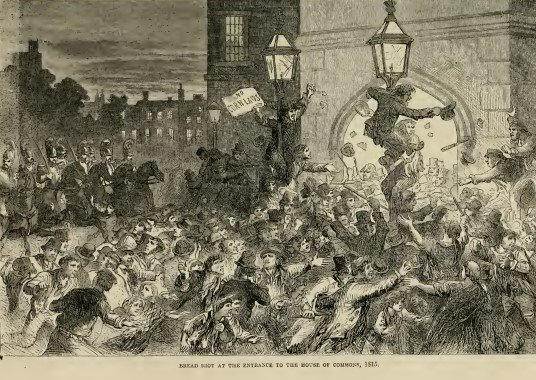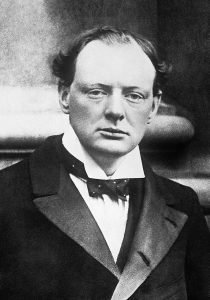It would be naïve to assume that philanthropic concern about poverty has always been motivated purely by altruism. Often there has been a significant element of “enlightened self-interest”, as donors have realised that failure to address social problems associated with poverty could harm the wider fabric of society and lead to unrest or even revolt.

The historian David Owen argues that this was a key motivating factor in the enthusiasm for philanthropy during the Tudor era:
“[The Tudors] steady concern with the eroding poverty of their age proceeded not from any sentimental concern for the poor but rather from an astute understanding that unrelieved, uncontrolled want constituted a grave threat to the stability of the realm. It is not too much to say that the Tudors viewed charity as a necessary aspect of public policy rather than as a requirement of Christian morality”
Fear of unrest as a motivation for philanthropy has been a constant theme throughout the ages. Although this was not always necessarily conscious since, as the historian Frank Prochaska notes, “the ruling classes largely took it for granted that deference would flow from their philanthropy”.

At times of particular poverty or hardship, however, fear of unrest has become a more explicit motivating factor. During the late 18th century for instance, there was widespread concern that the radicalism that had led to the French Revolution would cross the channel and cause similar unrest in England. Figures like the philanthropist Jonas Hanway argued that charity was vitally important because “only charity could mediate between rich and poor and act as a counterbalance to ‘all the evil passions of envy, covetousness, revenge, so frequent, so pernicious”.
Later, during the Victorian era, the plight of Irish labourers (so-called “navvies”) became something of a philanthropic cause celebre, and it has been suggested that this was not entirely altruistic. The historian Geoffrey Finlayson argues that while philanthropic concern about this issue was “partly influenced by a genuine religious or humanitarian solicitude that men should have to live in such circumstances’, it was also driven by ‘the widespread fear that bands of navvies– whose style of life was, to say the least, robust – might constitute a threat to public order and to property as they move around the countryside’.
The Charity Record & Philanthropic News, a newspaper about charities that ran for more than 20 years from 1881, even argued in an editorial that benevolence helped “crush out that class feeling which at times threatens to turn this England of ours into two hostile camps”.

Many throughout the 19th and early 20th centuries continued to harbour fears that gross inequality and growing working class identity would lead to the existing structures of capitalism that had made them rich being toppled. Indeed, Winston Churchill argued in 1915 (while still a Liberal) that inequality, urban poverty and the unrest it foments was the greatest threat to Britain:
“The greatest danger to the British Empire and to the British people is not to be found among the enormous fleets and armies of the European Continent, nor in the solemn problems of Hindustan . . . nor any danger in the wide circuit of colonial and foreign affairs. No, it is here in our midst, close at home, close at hand in the vast growing cities of England and Scotland, and in the dwindling and cramped villages of our denuded countryside. It is there you will find the seeds of Imperial ruin and national decay – the unnatural gap between rich and poor . . . the awful jumbles of an obsolete Poor Law, the constant insecurity in the means of subsistence and employment which breaks the heart of many a sober, hard‐working man, the absence of any established minimum standard of life and comfort among the workers, and, at the other end, the swift increase of vulgar, joy‐ less luxury – here are the enemies of Britain. Beware lest they shatter the foundations of her power.”
Some philanthropists therefore saw their giving in part as “riot insurance”; or as Ben Whitaker puts it in his book The Foundations, as “Danegeld that must be paid to preserve capitalism and to contain discontent lest it breed subversion and revolution”.

Labour activists were more than alive to this role of philanthropy, and often made it the focus of their criticism. The women’s rights pioneer Florence Kelley, for instance, dismissed elite giving as “a means by which capitalists return to the workers a small fraction of the wealth stolen from them in order to control ‘the dependent and dangerous classes’ and avert the revolution.”

Others, meanwhile, were able to use this tension to their advantage. The charity leader Thomas Barnardo, a canny but not always entirely scrupulous fundraiser, was perfectly willing to play on fears of unrest in order to drum up more support for his work with orphans, declaring that “every boy rescued from the gutter is one dangerous man the less” and that if nothing was done “this seething mass of human misery will shake the social fabric”.
In the modern context, philanthropy may be a less reliable tool for purchasing deference than it was in the past. However, there are still critics who would accuse donors of engaging in a “bread and circuses” approach, where their giving is done with an eye to staving off criticism of themselves and of the capitalist system in which they have prospered.
At the same time, however, philanthropy also acts a vital source of support for civil society organisations around the world which offer people ways of associating and speaking out in order to challenge power. In these cases fear of unrest may well be a motivating factor, but the aim is not to suppress dissent – rather it is to channel it in ways that avoid the need for violent confrontation.
Either way, it is clear that awareness of inequality and concern about its consequences has been an important factor in shaping philanthropy.

